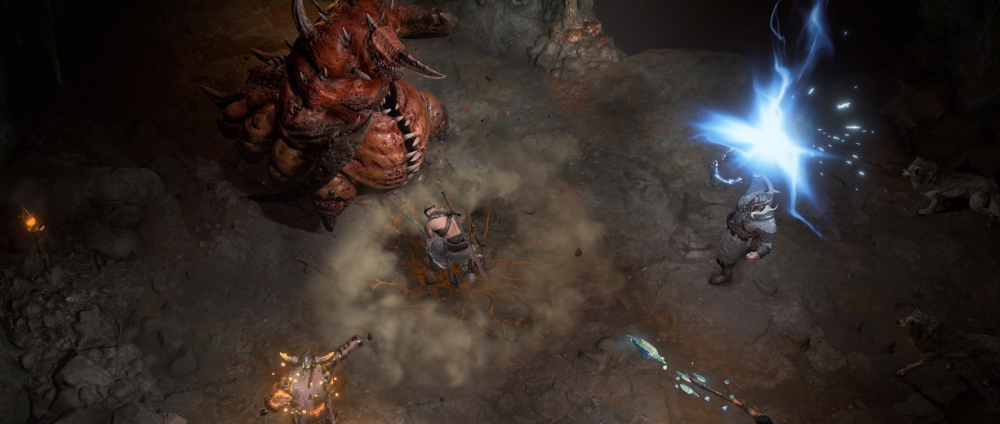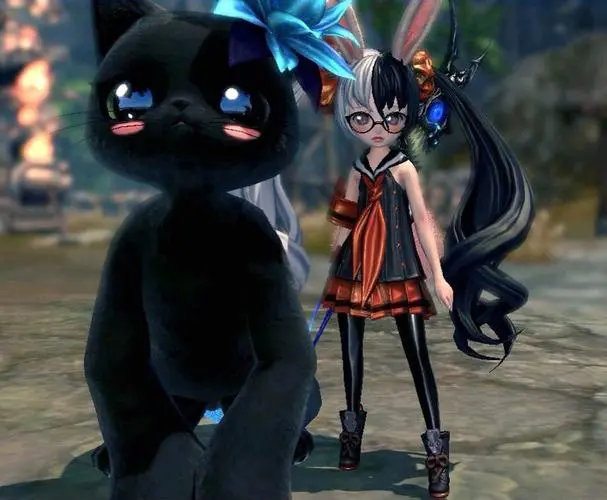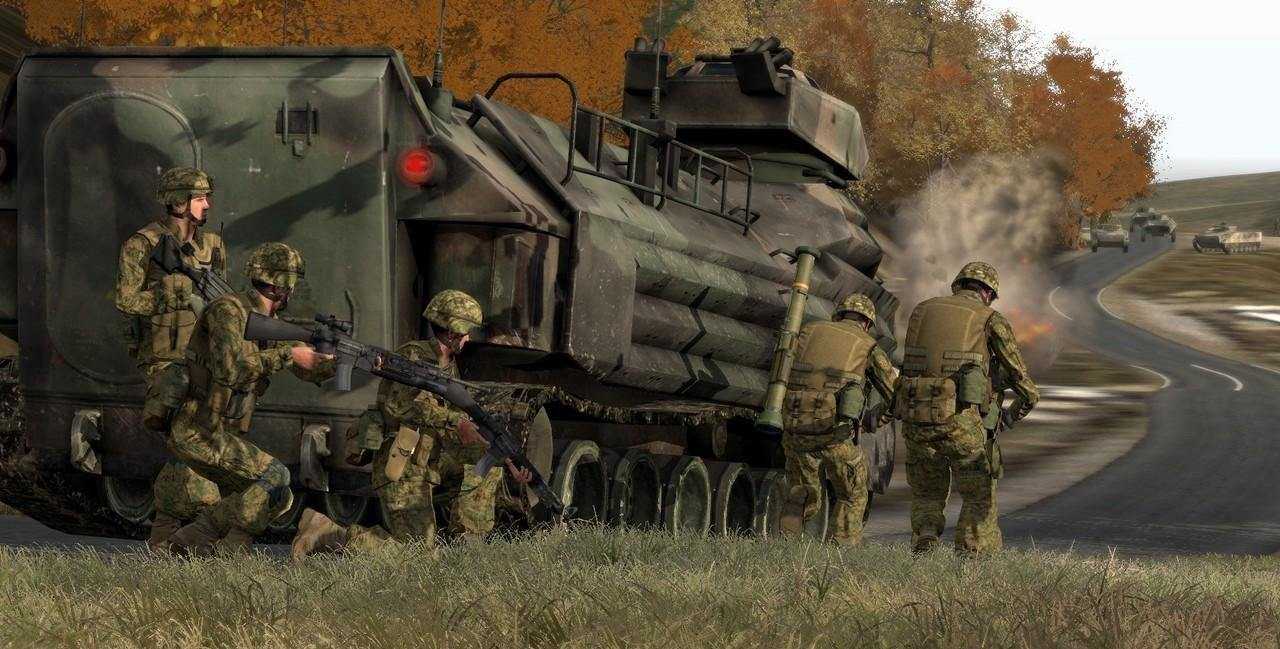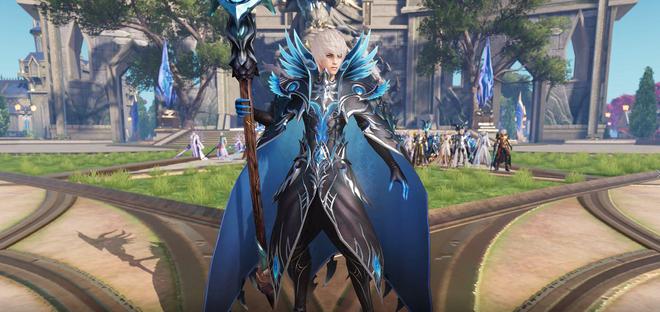Diablo 4 Asylum 5 video guide

This article is based on an exclusive license agreement between Camp Fire and Game Informer for the Chinese region.With Diablo 4, Blizzard wants to reinvent the crisis-ridden land of Asylum. Each of the world’s five explorable areas – Kegistan, Sogren, Rift Mountain, Dry Plains, and Havize – has its own unique terrain, culture, quests, and monsters. Blizzard has gone to great lengths to ensure that these areas are not only fun to explore, but also have a greater sense of realism and narrative unity.
“Diablo” veterans have explored a number of areas in the lands of Asylum, but this time they are no longer monotonous areas with an emphasis on a single climate or element (such as snow or desert). Each area has biodiversity, with many kinds of unique terrain and threats. The transitions between these areas are also more natural, for example the emerald green of one area fades away to slowly become the dry canyon yellow of another. The villages and villagers better reflect the local cultural identity and story context, making the areas feel like self-contained worlds with their own histories, both ancient and more recent.
We spoke to Blizzard Art Director John Mueller, Senior Game Designer II Dini McMurry, Assistant Game Designer Madeleine James, and Senior Game Designer II Harrison Pink to hear more about the areas and get a video clip used to showcase their features.
Kegistan This is an arid land whose look is clearly inspired by the Middle East and the Mojave Desert. It was once a thriving civilisation, but now all that remains are broken walls covered by sand dunes, with only scattered oases in the desert, but full of threats, like giant scorpions and hordes of bandits. Kegistan (and Havizar) is also the home of the Triune, a force previously mentioned only in the setting, and this will be their first real appearance in the game.
Blizzard says that Diablo 3 players will get to see what Cardian has become in the aftermath of the Diablo 3 storyline. While the development team didn’t want to spoil the details – it is, after all, a very important landmark in the campaign – they hinted that the situation might not be ideal.
Thorgrun.Inspired by the Scottish Highlands, this is a scenic but very wet area for those who like rolling hills and white sandy beaches. But beware, the coastline of Sogren is swarming with drowned corpses (that is, zombies turned into the dead who died at sea), especially at the highest peaks of this continent, where a particularly large number of drowned corpses guard the abandoned lighthouse.
“At the very end, there’s a giant Drowned Corpse called Sea Hag, who is almost their queen,” says quest designer Madeleine James. “She’s like all the Drowned Corpses put together times three, and with her swollen body parts, it’ll be interesting to see this enemy at the last minute.
Sogren is the home of the Druids and the Druid Academy, plus there will be a ‘Bastion’-related story line here too. (Bastion is an online co-op based quest.) A faction called the Knights Penitent also has roots here, as well as many werewolves and giant spiders that inhabit the area. The already desolate and dangerous Misty Wasteland in Diablo 3 has been renamed Blood Moors, and it looks like it’s even worse than before.
Any good RPG has to have a poison pool, and Havize accomplishes this nicely. Blizzard has based the game on the swamps of Florida and Europe and added a plethora of poisonous flora and fauna that are bound to give explorers a hard time. Perhaps the ugliest enemy in this area is the ‘Nangari’, a new snake-looking enemy with human body parts and several heads. “They’re grotesque and horrible to look at,” says Harrison Pink, senior mission designer and area director.
A part of Havize is occupied by the Sacramental Order, a religion of light, which came to Havize in search of sacred sites. After the failed expedition, some of the disillusioned and discontented members settled in the town of Zarbinzet. As well as seeing armour-clad expeditionaries patrolling the area, players will see several old Zakaranum forts that have leaned a little and are partly mired in the muddy ground.
Rift Peak Mountain This cold area is ruled by the harsh ‘Cathedral of Light’. The area is loosely modelled on the Carpathians and those who are willing to abide by the rules of the Cathedral of Light and can endure the cold climate of the Rift Mountains (there is a year-round snowstorm in one part) can live in peace under the protection of the Cathedral of Light.
“One of the cities has a big woodpile for burning sinners, and it’s a normal thing for them to do,” Pink says.
Other parts of the Split Peak are not frozen all year round. The warmer parts are covered in melting snow, which turns into waterfalls that eventually flow into the waterways of the Hawize Swamp. In an important main quest, players will visit the Alabaster Monastery of the Cathedral of Light, a heavily fortified fortress tucked away on top of a towering mountain. Players will make a bone-chilling pilgrimage to reach the monastery to prove their worth. As you climb, you are likely to be attacked by kazira (aka goatmen) who use ice magic.
The Dry Plains Located between the Sogren and Split Peaks, this area is characterised by arid meadows and rugged crags, as well as Yellowstone inspired lava rivers, white sandy beaches and colourful geothermal hot pools. It’s not exactly a pleasant place to live, but a group of barbarians managed to settle here after the destruction of their homeland, Mount Arriet. In terms of threats in this area, cannibalistic tribes attack caravans bringing valuable water to the town, so you will also see teams of mercenaries escorting the caravans. There are also areas of salt marshland in the Dry Plains that have been excavated deep into the earth, which art director Mueller says is not a good idea and hints that it involves a larger story.
While the main campaign is a big adventure that spans all the zones, Blizzard says that most of the side quests are completed in one area. So don’t assume that the quest you pick up in Havize will end up in the Rift Peaks. The main goal of the side quests is to flesh out the story of each area, reflecting the trials and tribulations people go through, giving players an up-close look at the day-to-day lives of the locals and adding to the main story. The floor of the dungeon takes on the character of the area in which it is located. Within each area, certain monster clans use specific elements, for example, in drier areas, more lightning-using enemies will be encountered.
While Diablo 4 uses back the super dark tone and aesthetic of Diablo 1 and Diablo 2, Blizzard knows that it can’t be a world that is only sad. By mixing a variety of art styles in each area, the lands of Asylum become more colourful and will have players jumping at the chance to make their way through the land, no matter how many crises lurk here.
“It’s easy to fall into the endless darkness of despair,” says Pink, “but if you don’t have a glimmer of life, a glimmer of hope, a character you really care about, you might think, ‘If everything is so bad, why am I going to all this trouble to save the Land of Asylum from Lilith? So it was a very, very important task for our team to show players glimpses of humanity and to enable them to become emotionally attached to the world.”
Diablo 4 will be released on 6 June on PS5, Xbox Series X|S, PS4, Xbox One and PC platforms. Players can get an early taste of the atmosphere in the Land of Asylum in the Beta public test from 24 March to 26 March.




